Tracks of Destiny
June 6, 2025, will be remembered as the day when India’s most ambitious rail project didn’t just connect places—it connected people, dreams, and destinies. The tracks laid across the Himalayas are now the tracks of hope, unity, and progress, carrying a region and a nation toward a shared future
By Ajaz Rashid
On June 6, 2025, history thundered across the Himalayas as a Vande Bharat Express crossed the towering Chenab Bridge—marking the fulfillment of a century-old dream. Prime Minister Narendra Modi inaugurated the Udhampur-Srinagar-Baramulla Rail Link (USBRL), a marvel of modern engineering that now stitches Kashmir to the rest of India by rail. More than just steel and stone, the project is a symbol of unity, resilience, and national pride. First imagined in 1892 and realized through decades of political will and human effort, the USBRL signals not only connectivity—but a transformative new chapter for Jammu and Kashmir.
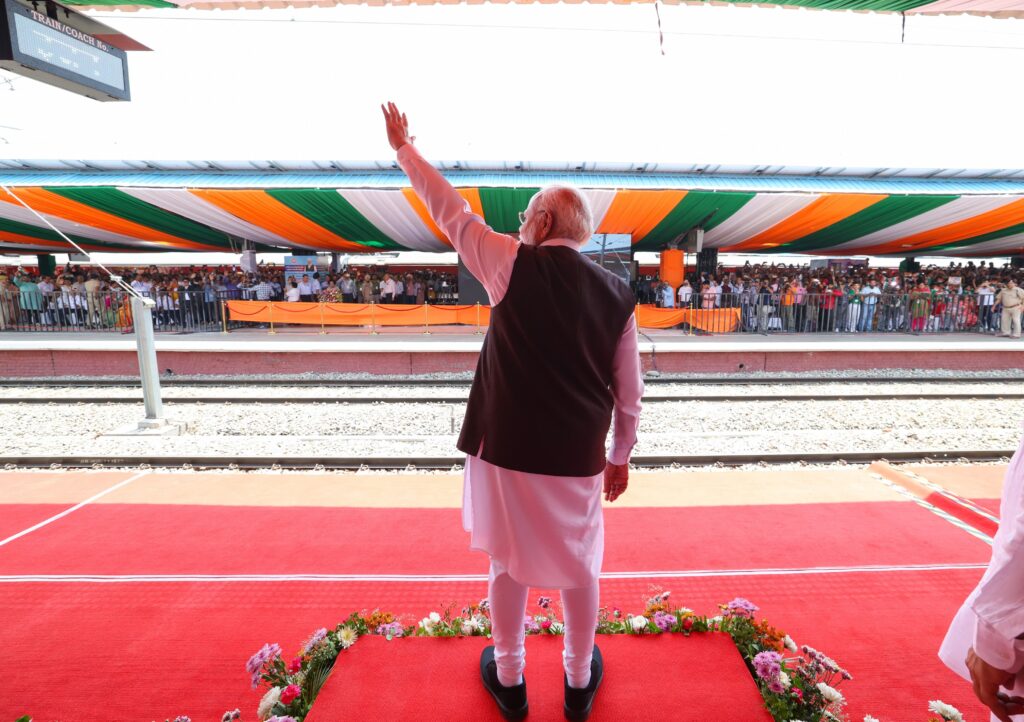
A Century-Old Dream Realized
On June 6, 2025, the thunder of a train rolling across the world’s highest railway bridge echoed through the valleys of Jammu and Kashmir, marking a day historians will remember as the moment India’s most challenging infrastructure dream became reality. Prime Minister Narendra Modi, flanked by engineers, workers, and local leaders, inaugurated the Udhampur-Srinagar-Baramulla Rail Link (USBRL), the iconic Chenab Railway Bridge, and the Anji Cable-Stayed Rail Bridge, flagging off Vande Bharat Express trains that now connect Kashmir to Kanyakumari for the first time in history
This was not just the completion of a railway line—it was the culmination of a vision first imagined in 1892 by Maharaja Pratap Singh, revived by the British, and finally realized after decades of political will, engineering innovation, and human grit.
Engineering Marvels in the Heart of the Himalayas
The USBRL project, stretching 272 kilometers from Udhampur to Baramulla, is a saga of overcoming nature’s fiercest obstacles. Traversing 36 tunnels and 943 bridges, the line carves through some of the world’s most formidable terrain, linking remote mountain communities that were once accessible only by treacherous roads or air.
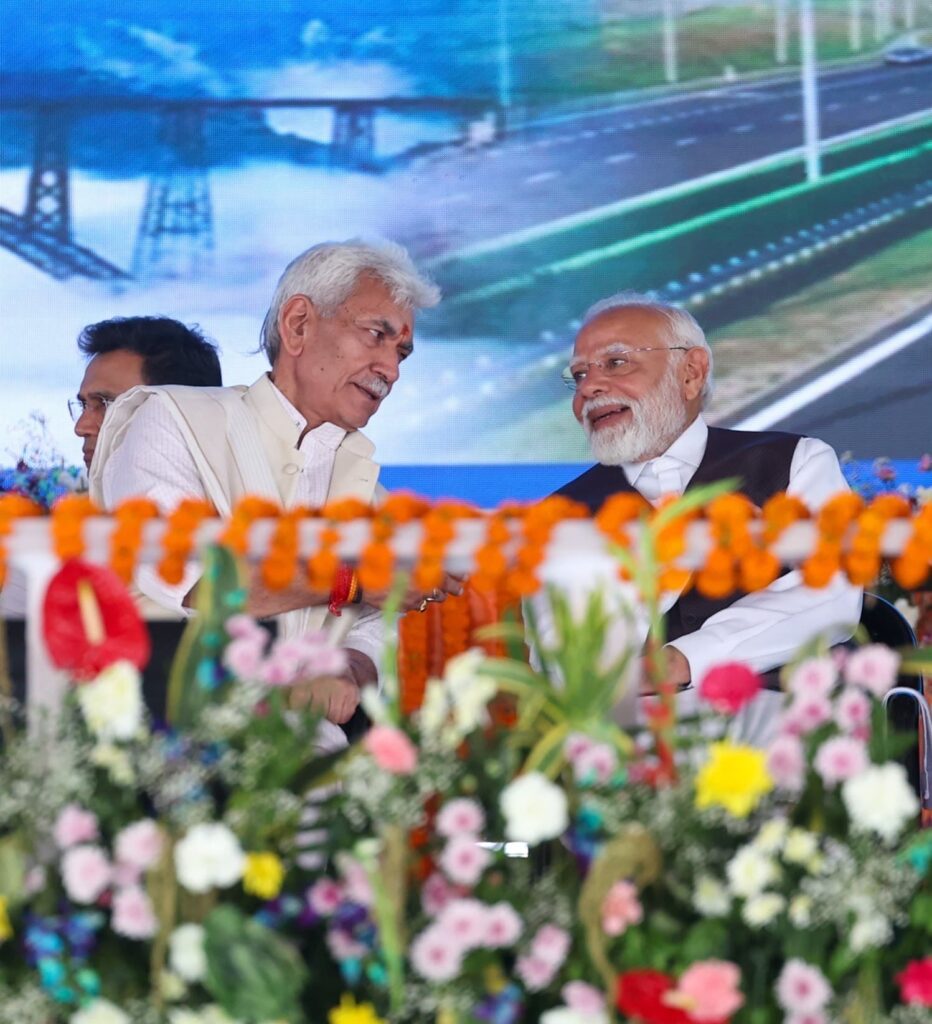
The Chenab Bridge, now a global icon, soars 359 meters above the river—taller than the Eiffel Tower by 35 meters. Built to withstand earthquakes and winds up to 260 km/h, the 1,315-meter-long steel arch is engineered for a lifespan of 120 years, a testament to India’s growing prowess in civil engineering. The Anji Khad Bridge, India’s first cable-stayed rail bridge, rises 1,086 feet above the Anji River, supported by 96 cables and equipped with a state-of-the-art monitoring system to ensure durability in the harshest conditions.
Prime Minister Modi, after walking to the viewpoint near the Chenab Bridge and interacting with engineers and workers, called the bridges “not just made of steel and concrete, but symbols of the strength and resilience of New India”.
“This bridge is more than just a structure. It represents the dreams of generations and will greatly benefit the people of Jammu and Kashmir.” — Omar Abdullah
Generations of Waiting, Working, and Hoping
For the people of Jammu and Kashmir, this railway is more than a transport link—it’s a lifeline. “Kashmir to Kanyakumari is no longer a slogan. Prime Minister Modi has turned this long-standing dream into reality, creating an unbreakable bond from North to South,” declared Lieutenant Governor Manoj Sinha, echoing the sentiment of millions who watched the first Vande Bharat Express depart for Srinagar.
Former Chief Minister Omar Abdullah, present at the inauguration, reflected on the decades-long journey: “Many people dreamt of this train service. What the British couldn’t do, you made a reality. Now, the Kashmir Valley is finally connected to the rest of India by rail. I was in Class 8 when this project began. I’m now 55, and I finally see it finished”.
The project’s construction phase itself was a generator of hope and opportunity. Over 14,000 jobs were created, with 65 percent going to locals. More than 525 lakh man-days of employment were generated, and hundreds of families who lost land received government jobs. The railway’s approach roads have connected 70 remote villages—home to 1.5 lakh people—transforming daily life by providing access to markets, schools, and healthcare.
Economic Lifeline
The economic implications of the USBRL are profound. With the Vande Bharat Express now slicing travel time between Katra and Srinagar to just three hours, the region’s famed apples, saffron, cherries, and handicrafts can reach national markets faster and at lower cost. “This will give a good jump to tourism. The economy will receive a significant benefit,” said Union Railways Minister Ashwini Vaishnaw, noting that five new terminals along the route will facilitate the movement of goods and people.
Tourism, battered by recent security concerns, is expected to rebound sharply. The new rail link offers pilgrims easier access to shrines like Amarnath and Vaishno Devi, while the Chenab Bridge itself is poised to become a major tourist attraction, drawing visitors from across India and the world. Local businesses, from hotels to handicraft workshops, are already preparing for a surge in demand.
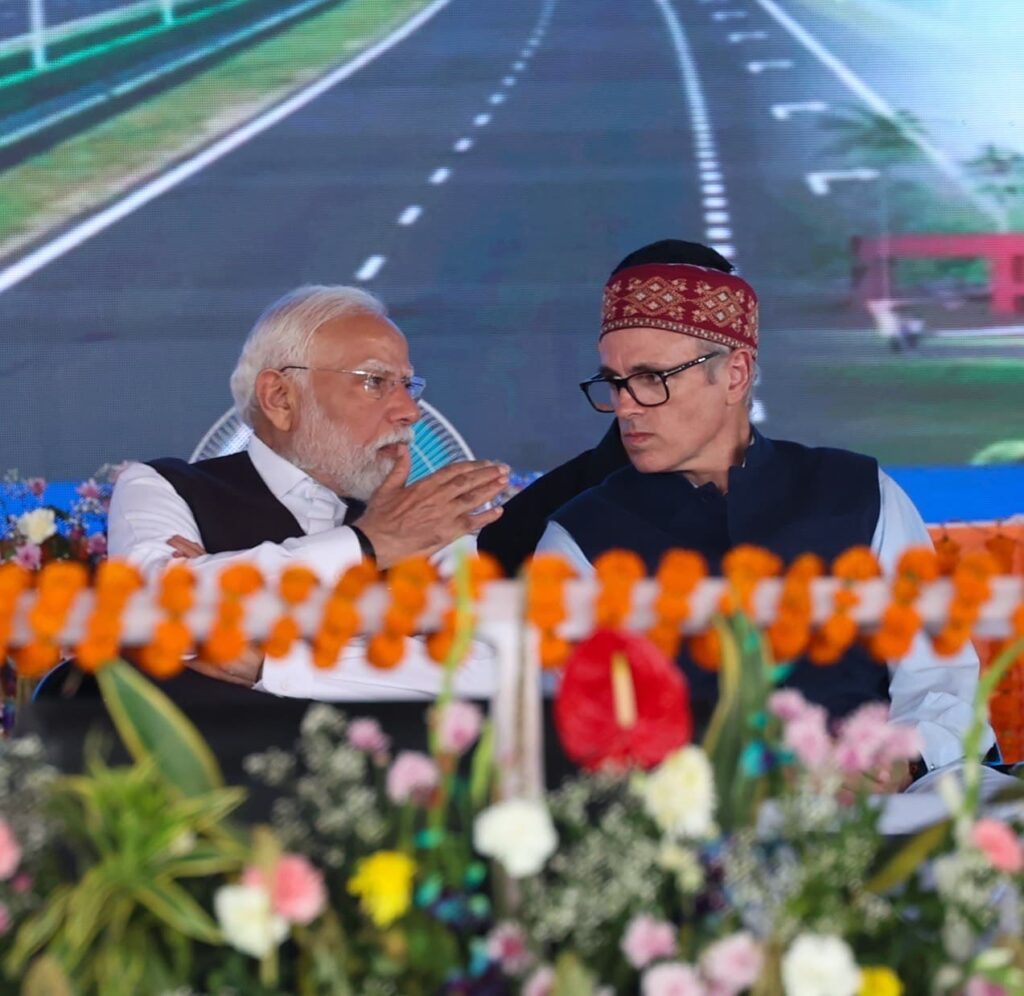
Strategic and Social Transformation
Beyond economics, the USBRL is a strategic asset, enabling rapid movement of troops and supplies in a sensitive border region. Electrification of the line contributes to environmental sustainability, reducing carbon emissions and setting a model for green infrastructure in challenging geographies.
Socially, the railway is a catalyst for integration. “Today’s occasion is a festival of India’s unity, strength, and integration,” PM Modi declared at a massive rally in Katra, emphasizing that the project fulfills the vision of national unity once dreamt of by Sardar Vallabhbhai Patel and Dr. Syama Prasad Mookerjee. The Prime Minister also announced the foundation of a new medical college in Reasi, the first in the district, and inaugurated road projects worth nearly ₹2,000 crore, further knitting the region into the national fabric1.
By the Numbers:
-
272 km: Length of USBRL
-
943 bridges, 36 tunnels, 119 km of tunneling
-
359 m: Height of Chenab Bridge (taller than Eiffel Tower)
-
₹43,780 crore: Total project cost
-
14,000+ jobs created during construction
Key Milestones:
-
1892: First envisioned by Maharaja Pratap Singh
-
1994: Project formally approved
-
2002: Declared a National Project
-
2025: Full operationalization with PM Modi’s inauguration
Security, Resilience, and the Promise of Peace
The inauguration comes in the shadow of recent terror attacks, including the Pahalgam incident that left 26 civilians dead. PM Modi used the occasion to send a strong message: “Pakistan tried to target Kashmir’s economy and trigger communal clashes in India, but failed in the face of people’s unity and resolve. The people of Jammu and Kashmir have sent a loud and clear message: we reject terror, and we stand united”1.
He highlighted “Operation Sindoor,” a decisive counter-terrorism operation, and announced additional central assistance for families affected by cross-border shelling1. “No power in the world can stop the development of Jammu and Kashmir. I will not let vikas (development) slow down—not today, not tomorrow. If anyone tries to disrupt J&K progress will have to face Modi first,” the Prime Minister declared, drawing applause from the crowd1.
Integration, Aspiration, and National Pride
The USBRL’s completion is not just about steel and tracks—it’s about restoring faith, dignity, and aspiration to a region long seen as India’s crown but disconnected from its heart. The project’s impact is already visible: children in remote villages are seeing trains for the first time, local producers are planning for new markets, and students are dreaming of opportunities once unimaginable.
The symbolism is powerful. As PM Modi said, “Stations like Udhampur and Baramulla are not just names on the map, they are part of the identity of a new Jammu and Kashmir”. The Chenab and Anji bridges, once considered impossible, now stand as monuments to what India can achieve when vision, will, and unity converge.
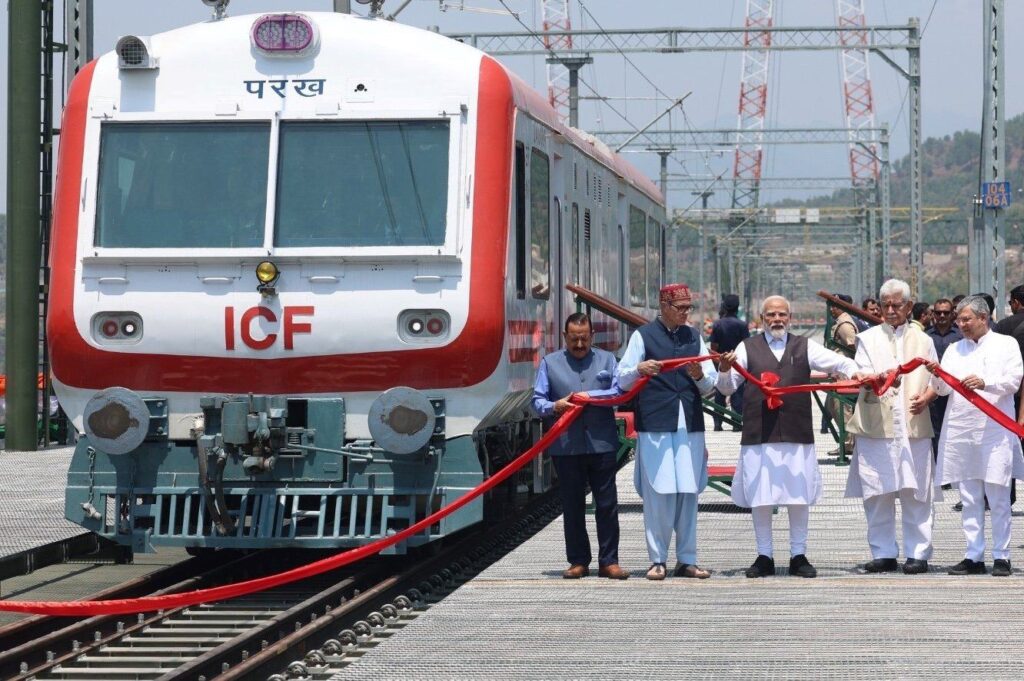
The Road Ahead
With the rail link now operational, attention turns to the future. The government has committed to further infrastructure upgrades, including new tunnels, expressways, and digital connectivity, aiming to make Jammu and Kashmir a model of modern, inclusive development. The region’s youth, once caught between conflict and uncertainty, are being urged to become innovators, entrepreneurs, and contributors to the nation’s growth story.
As the first Vande Bharat trains glide across the Chenab Bridge and into the heart of the Valley, they carry more than passengers—they carry the hopes of a region, the pride of a nation, and the promise of a future where no dream is too distant, and no destination too far.

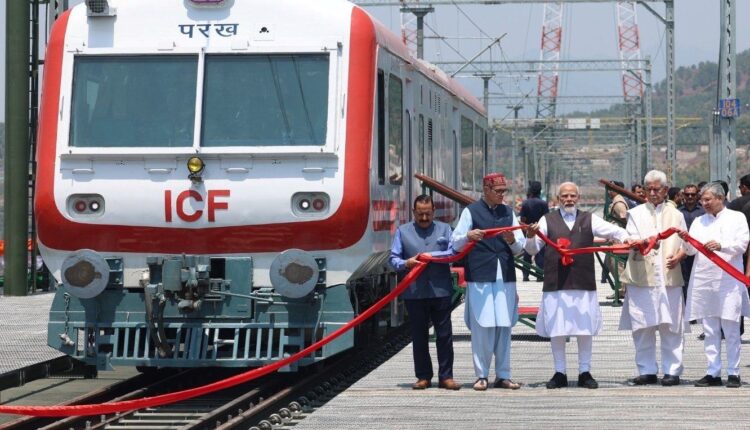
Comments are closed.